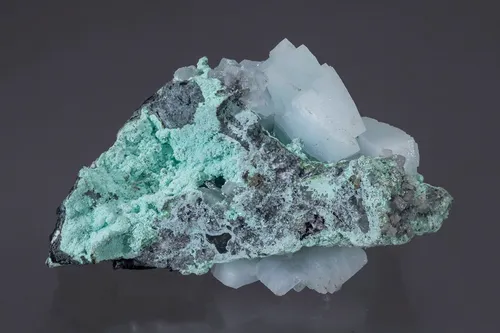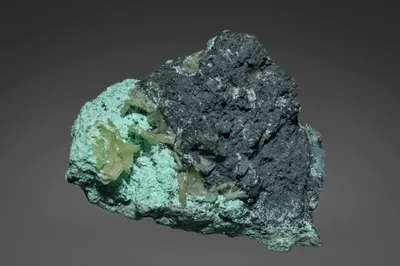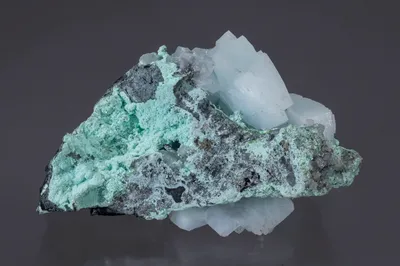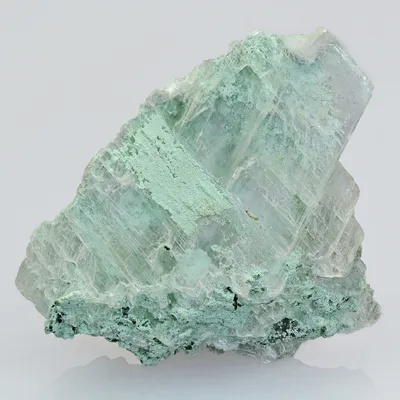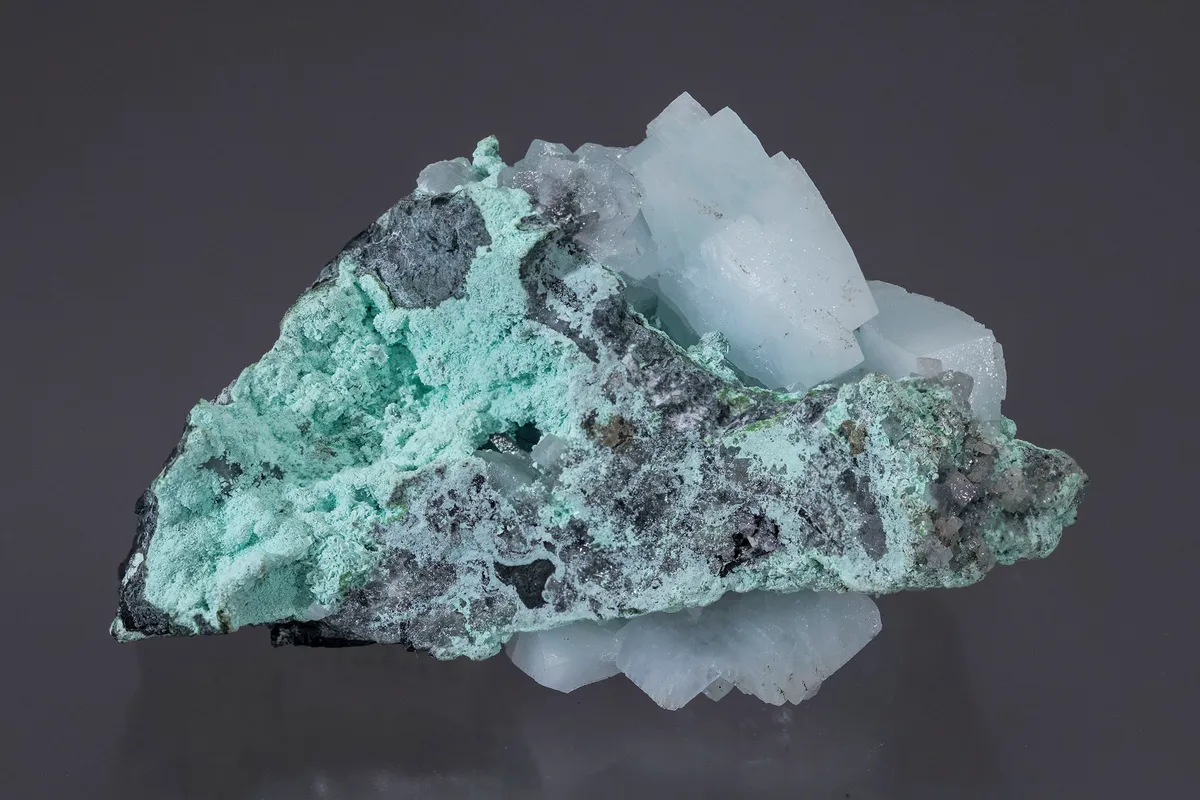
Mineral Species
Thometzekite
Type Locality
Yes
Composition
PbCu2+2(AsO4)2·2H2O
Crystal System
Triclinic
Status at Tsumeb
Confirmed (type locality)
Abundance
Very rare
Distribution
First and second oxidation zones
Paragenesis
Supergene
Entry Number
Species; TSNB351
Type Mineralogy
Thometzekite, IMA 1982-103, was first found in the second oxidation zone at Tsumeb in the late 1970s, although the level number from which the type specimen was recovered is not recorded. Gebhard (1999) attributed the discovery of thometzekite to Dr Wolfgang Bartelke, who was working at Tsumeb in the mid to late 1970s. The mineral was formally described as a member of the tsumcorite group by Schmetzer et al. (1985) who named it for Wilhelm Thometzek, Tsumeb mine director between 1912 and 1922. Type material is conserved at the Mineralogisch-Petrographisches Institut, Universität Heidelberg, Germany (catalogue number 10’11’19).
General Notes
Thometzekite was the third-discovered member of the tsumcorite group (after tsumcorite and helmutwinklerite).
On the type specimen, thometzekite occurs as tabular crystals to 20 μm, but only in the order of 1 μm in thickness. It is bluish green to green, with an earthy lustre (due largely to the fine grain-size), and associated with massive gypsum and, according to Schmetzer et al. (1985), tabular mimetite. The latter was subsequently found to contain cadmium in partial substitution for lead, and described as the new mineral vanackerite (Schlüter et al. 2016).
Gebhard and Schlüter (1995) reported that tiny grass-green crystals associated with the chalcanthite-lammerite assemblage discovered in 1981 on 35 Level, are an iron- and sulphate bearing variety of thometzekite. The crystals averaged approximately 3 wt % FeO and 4 wt % SO3. They proposed that the colour difference (from earlier finds of thometzekite) may be attributable to the iron content.
A specimen in the Southwood Collection (MS 2015.022) comprises a very rich encrustation of pale green earthy thometzekite, associated with blocky, slightly frosted crystals of anglesite in a vug in galena-rich sulphide ore. The specimen was formerly in the collection of TCL mineralogist John Innes and is almost certainly from the second oxidation zone.
Analysis of a pale, spearmint-green partial coating on the type specimen for schultenite, (specimen number BM.1926,025 in the Natural History Museum, London) has demonstrated the presence of thometzekite as part of the schultenite type assemblage (Mike Rumsey, pers. comm. to M. Southwood, October 2015). This appears to have been the first confirmed observation of thometzekite from the first oxidation zone. The schultenite type specimen is believed to have originated from 7 Level (Klein 1938).
Associated Minerals
anglesite; anhydrite; chalcanthite; gypsum; hidalgoite; lammerite; leightonite; schultenite; vanackerite
